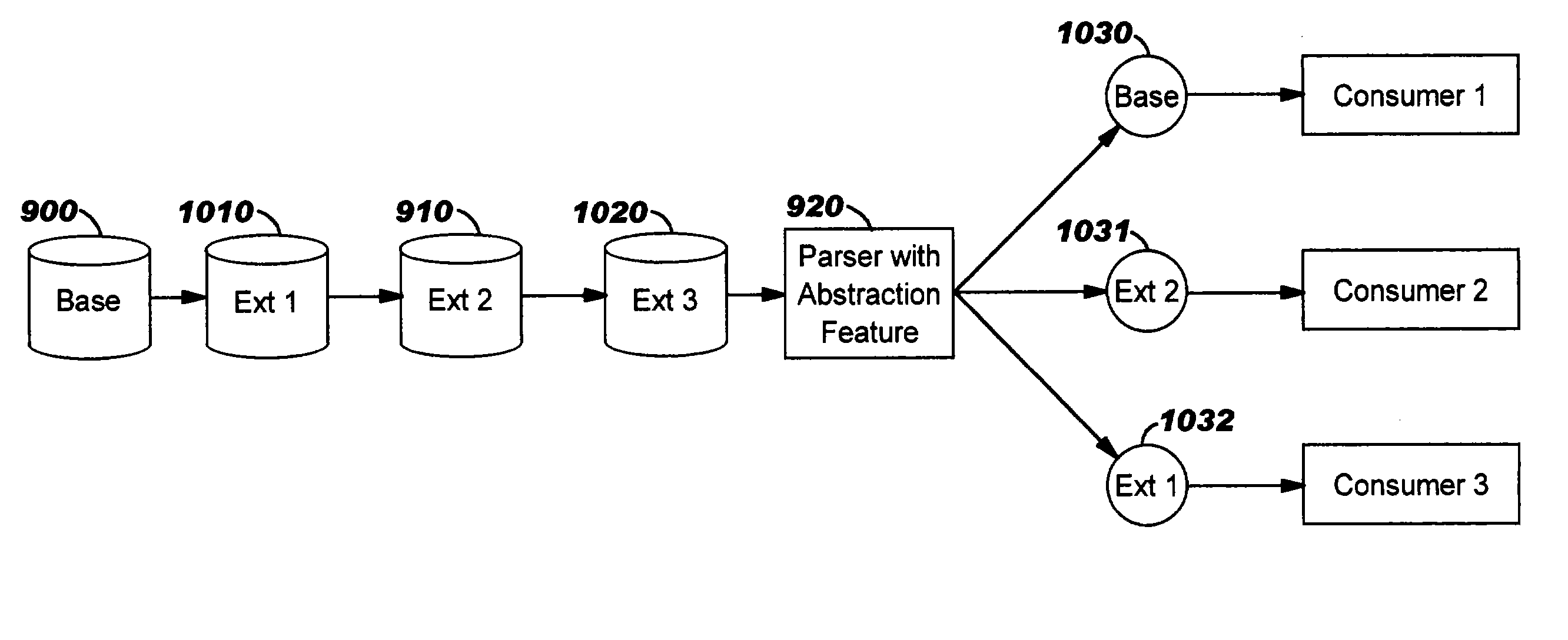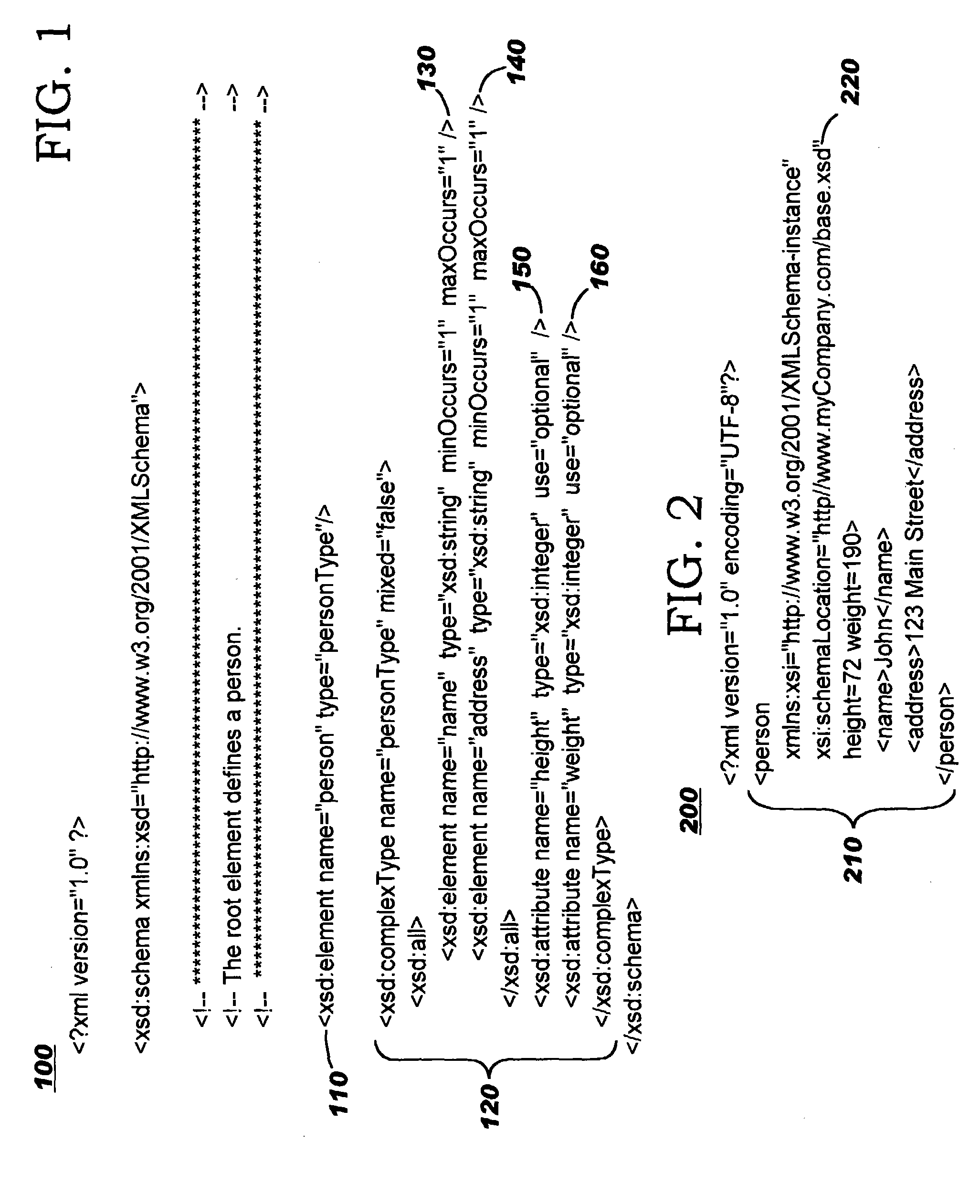Applying abstraction to object markup definitions
a markup definition and abstraction technology, applied in the field of computer software, can solve the problems of not being able to adapt consumer applications to deal with extensions, extending the scope of markup languages and parsers, and presenting problems, and achieve the effect of improving the processing of documents
- Summary
- Abstract
- Description
- Claims
- Application Information
AI Technical Summary
Benefits of technology
Problems solved by technology
Method used
Image
Examples
Embodiment Construction
[0043] The present invention provides techniques for improving the processing of documents created according to extended schemas, by applying selectable, dynamically-variable abstraction levels when validating and parsing structured documents. A consumer application using the present invention can specify which abstraction level should be used when creating objects for that consumer application. A validating parser can then interpret a schema, which may be extended to multiple levels, at the level needed by the consumer while still maintaining the accuracy of all the extensions.
[0044] Consider a common object description maintained as a markup language representation. This common object may be extended by different organizations in ways that are application-specific. If this common object is to be shared among the organizations, each consumer application must be able to process the object instances using a schema that represents only the extensions known to that consumer applicatio...
PUM
 Login to View More
Login to View More Abstract
Description
Claims
Application Information
 Login to View More
Login to View More - R&D
- Intellectual Property
- Life Sciences
- Materials
- Tech Scout
- Unparalleled Data Quality
- Higher Quality Content
- 60% Fewer Hallucinations
Browse by: Latest US Patents, China's latest patents, Technical Efficacy Thesaurus, Application Domain, Technology Topic, Popular Technical Reports.
© 2025 PatSnap. All rights reserved.Legal|Privacy policy|Modern Slavery Act Transparency Statement|Sitemap|About US| Contact US: help@patsnap.com



